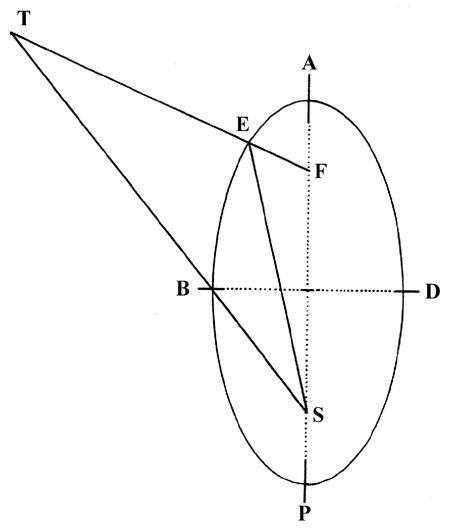
In the above diagram ABPD is an ellipse, S and F foci, A and P aphelion and perihelion; the planet is at E, and angle AFE (the middle anomaly) changes uniformly. As Seth Ward defined it, the problem is to derive angle ASE (the true anomaly) from knowledge of angle AFE. Calculation requires plane trigonometric functions after extending line FE to T (such that ET equals ES). Ward came upon this Simple Elliptical Hypothesis in the process of criticizing Boulliau’s Conical Hypothesis (1645). Though easier to employ than Kepler’s Second Law, Ward’s hypothesis was very weak in several respects. In practice, Ward’s Hypothesis differed from Kepler’s predicted positions for Mars by 30′ or more in longitude. In 1657 Boulliau provided a response to Ward’s published criticism, and in the process, Boulliau proposed what has come to be called the ‘Modified Elliptical Hypothesis’ (1657), which had a number of subsequent variants. As with other modified elliptical hypotheses, Ward’s model in particular was weak in predicting planetary latitudes.